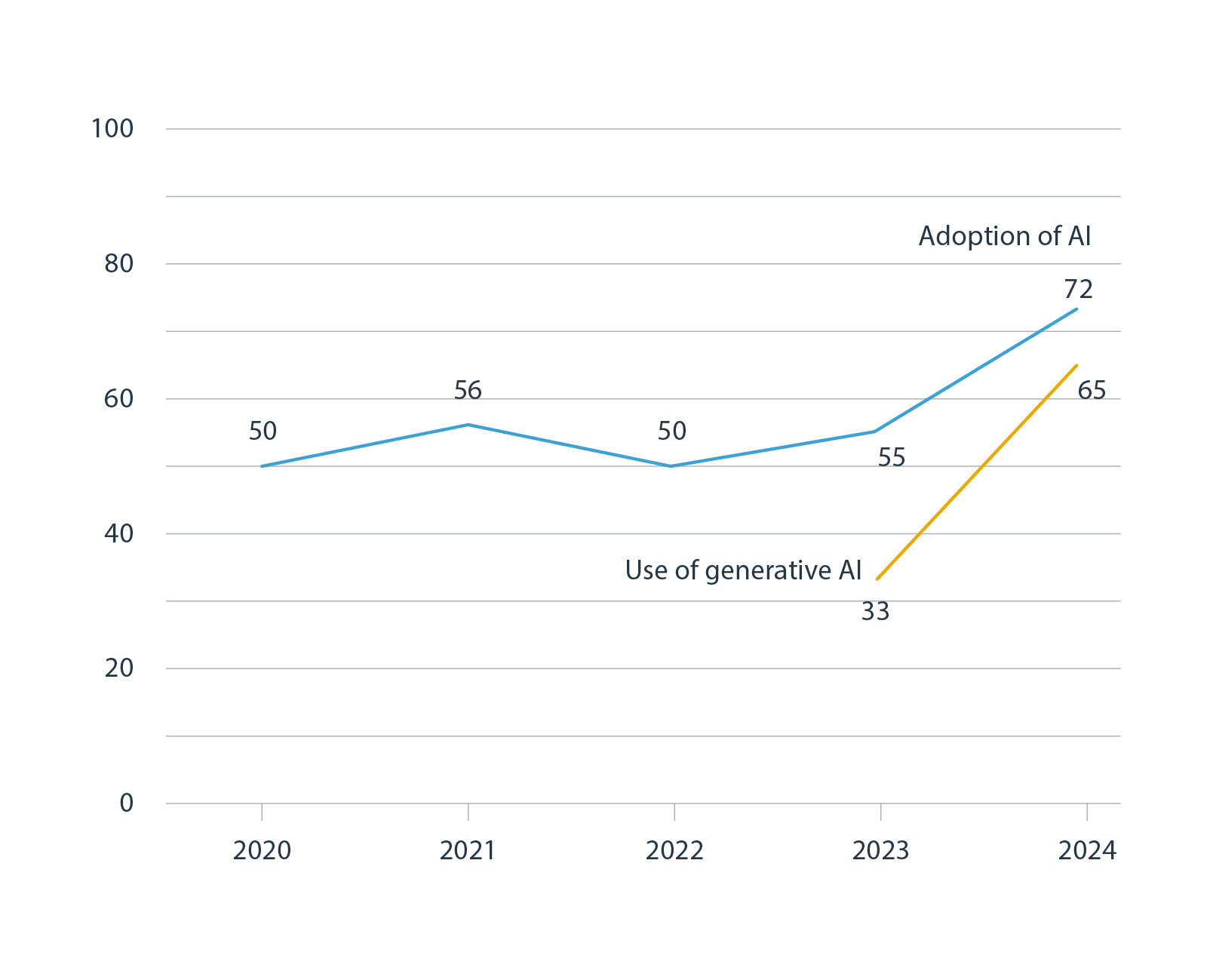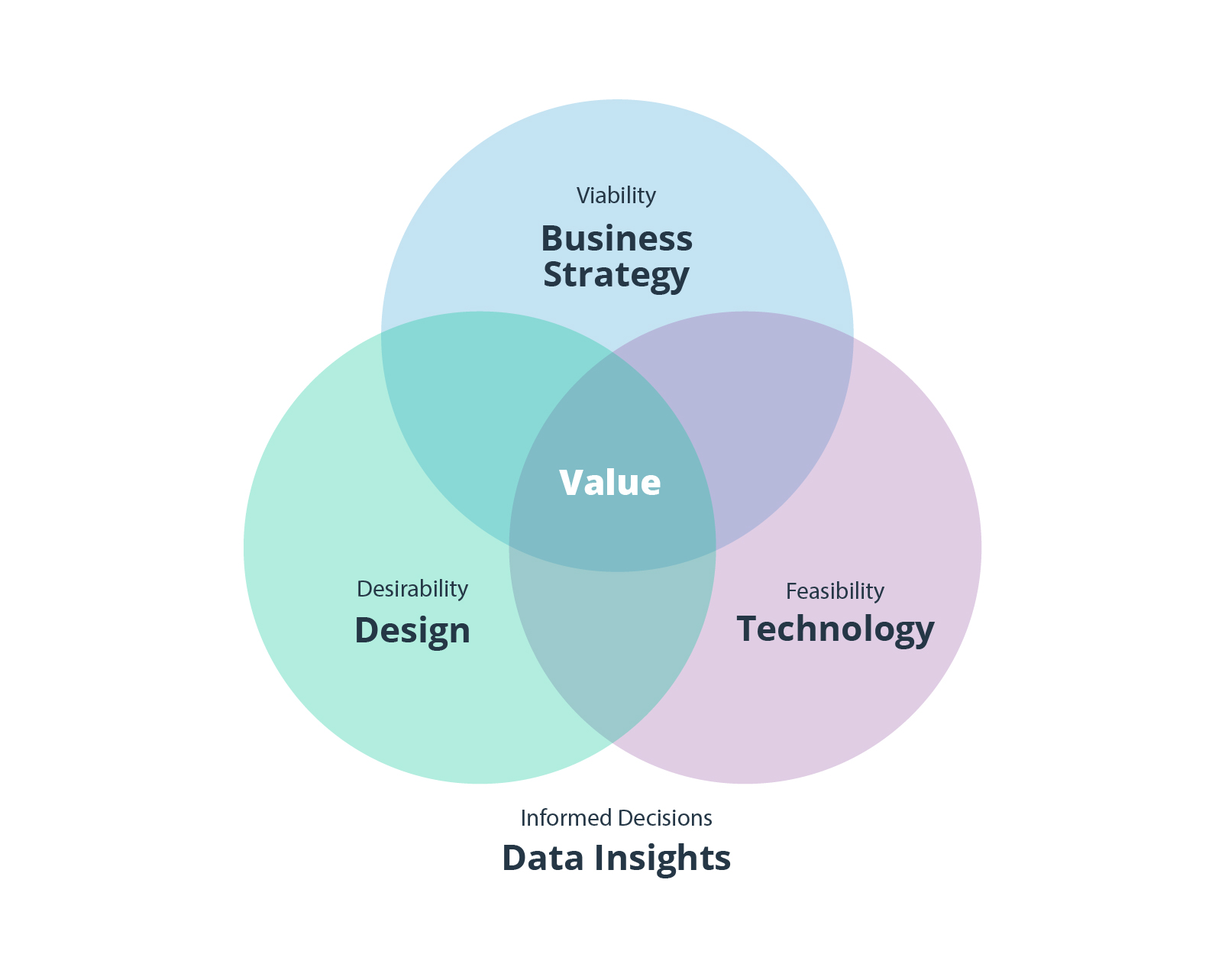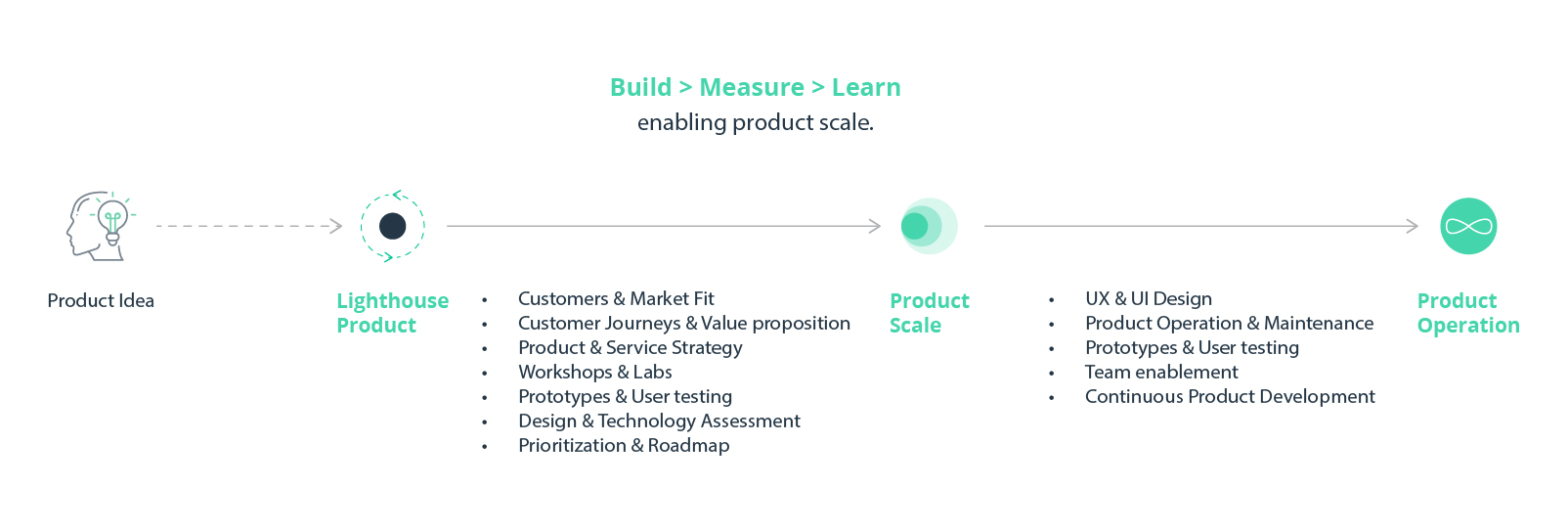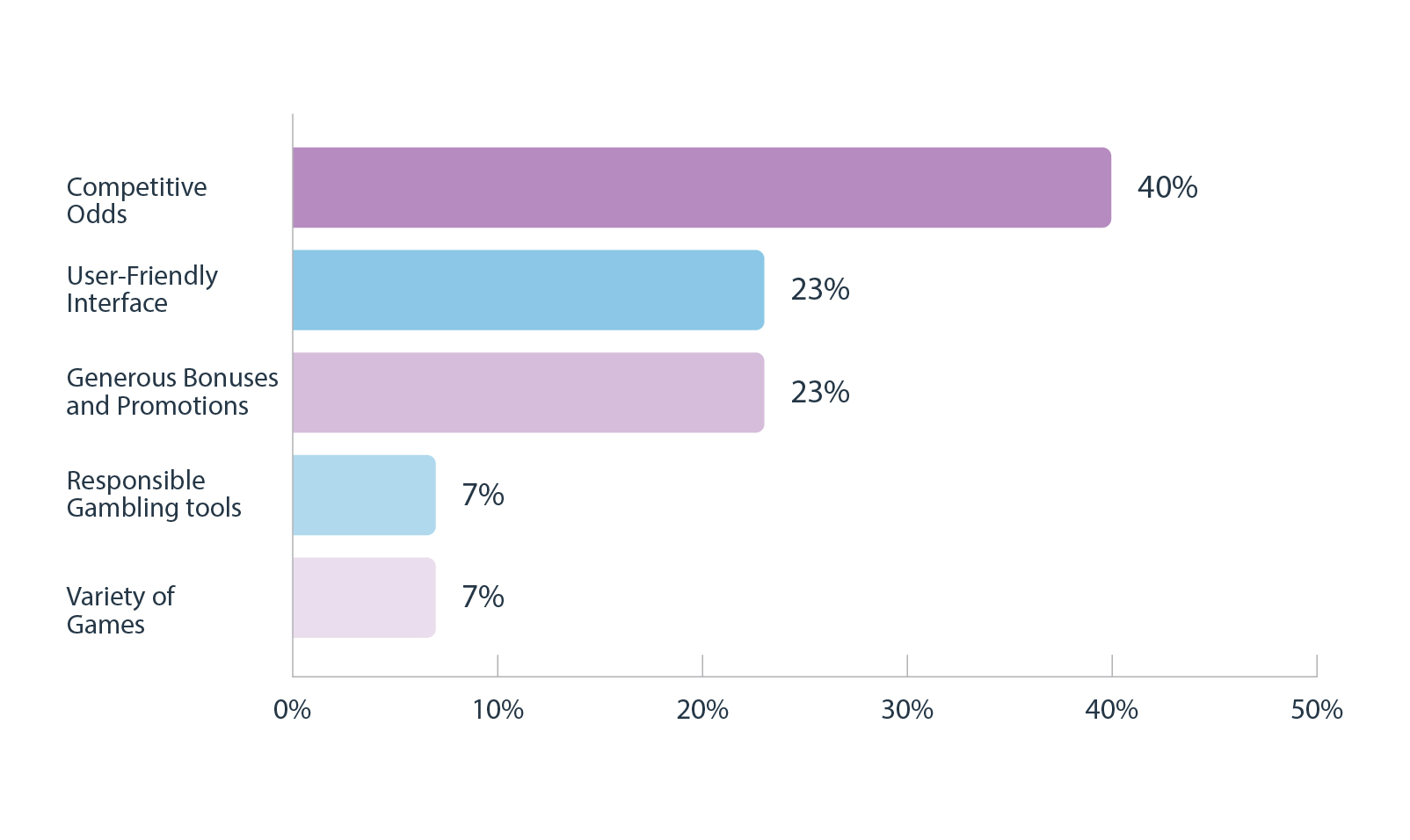What is innovation? We generally think of it as the introduction of something new. However, there is a difference between “new” and “novel.” Michael Jackson didn’t invent his signature Billie Jean moves. They weren’t new: he borrowed some moves from Bob Fosse’s routine in a 1974 movie, “The Little Prince.” However, he incorporated the moves in a way that was novel.
Who went down in history as the biggest innovator in dancing? Michael Jackson.
Innovation isn’t about bringing something never-before-seen to the markets — it’s about applying something new in a meaningful way. We’ve seen entirely new industries born out of improving customer experience (CX). FinTech organizations quickly rose to the ranks by offering convenient digital account opening and no-fee mobile banking accounts. Did Revolut or Nubank invent mobile banking? No, they just did it much better than the major banks at that time.
The tech competition is intense. Almost three-quarters of businesses have already adopted AI, at least in some capacity. More than 50% plan to increase AI investments by 25% to 50% over the next two years, and 14% will increase their budgets by 50% to 75%, according to SAP—all in hopes of securing much-touted advantages like greater employee productivity, cost optimization, and new revenue enablement.
Adoption rate of AI in at least one business function: percentage of respondents

Source: McKinsey
Virtual reality (VR) and the metaverse have been equally hot subjects, especially in iGaming. Goldman Sachs estimates that the metaverse could become a new $8 trillion market over the next two decades, covering virtual entertainment, metaverse commerce, and digital advertising. Accenture, in turn, expects that an equivalent of $1 trillion in new revenue will be created by the metaverse by 2026.
Ambitious forecasts, however, don’t always match reality. The return on investment of AI has been hard to quantify, as it is often delayed — and measuring it requires a mature data-driven culture of reconciling technical system metrics with business KPIs. A Gartner survey found that almost half of leaders struggle to estimate and demonstrate the value of AI adoption.
Sentiment towards the metaverse is similar. Among gaming executives surveyed by EY, 97% believe the gaming industry is at the center of the metaverse today. Still, only 49% are prioritizing investments in virtual, augmented, or mixed-reality experiences this year.
End-users have grown lukewarm towards VR headsets after dealing with inevitable bouts of motion sickness. Among VR device owners in the US, 56% aren’t using them regularly.
Since the start of this decade, technology adoption has become almost synonymous with innovation. However, existing or emerging technology isn’t an end unto itself. Any technology needs to be shaped and molded into a qualitatively new experience that end-users find meaningful, fulfilling, and engaging — and that’s what product thinking assists with.
Innovation occurs when technology is applied in a meaningful and contextually relevant way, transforming how we interact with and benefit from it.
Reconciling business and tech perspectives: the power of product thinking in iGaming
Product thinking is a methodology for determining what makes a product useful, wanted, and valuable for end-users.
Unlike design thinking, which often focuses on pure ideation and problem-solving, product thinking forces you to evaluate all possible solutions through the prism of feasibility, usability, viability, and value while making data-informed decisions to steer future releases.

Generally, product thinking precedes and guides design thinking, which helps evolve the product vision. Design thinking involves hands-on work with an idea through customer research, prototyping, and validation. In contrast, product thinking determines which ideas get on the drawing board in the first place and then shapes the further product evolution roadmap based on data collected from customer feedback and business outcomes.
In simpler terms, great product thinkers ask countless why questions: Why are we building this feature? Why do we (or don’t we) need this technology? Why must we act on this idea now?
Data helps answer these whys and establish the ground truth on market and customer behavior. By knowing your product’s needs, you can better determine the utility of emerging technologies — cloud and DevOps, big data analytics, AR/VR, AI, etc. — without risking painful market flops.
Here are several more ways in which product thinking helps iGaming organizations put technology in the best service of customer needs.
Products lead strategy
Product-led organizations stand at the forefront of global success primarily because they align market demands, operational needs, and business goals to decide what to build. A robust product strategy ensures that market conditions are suitable for launching a solution, the product delivers ongoing value to users, and its features serve as effective acquisition channels for new customers. This integrated approach asks a critical question: How do you determine what’s right for the market, users, and your business at any given moment?

In contrast to the outdated waterfall development method, where decisions trickle down from KPIs to technology and then to design, product thinking fosters a lean, agile approach. The waterfall method often leads to feature creep, resulting in products with unclear directions and diluted user experiences. By contrast, product thinking supports a pragmatic yet flexible framework, enabling organizations to move efficiently from conceptualization to execution.

The cornerstone of product thinking is validating product ideas through data-driven market and customer analysis. Companies can develop and test value hypotheses with select users by gathering community feedback, similar to practices at Dropbox and Airbnb. This approach focuses on potential profits or feasibility and on creating experiences that resonate with users. Machine learning or AI are harnessed to enhance these experiences without over-complicating the user interface.
Lean software engineering, grounded in Agile principles, transforms validated hypotheses into scalable digital products through feedback loops and iterative learning. Cross-functional teams comprising design, product management, and software engineering ensure balanced growth in all areas. Tracking specific metrics, including a north star metric, helps gauge success and guide decisions, ensuring that the product remains aligned with business goals and market trends.
Ultimately, product thinking combined with lean engineering and data-driven analysis allows organizations to scale their products effectively. By understanding and addressing both inward inefficiencies and outward market dynamics, businesses can maintain relevance and drive innovation in a competitive landscape.

Faster operational decision-making
Product-led organizations rely on data analytics to inform decisions within the product and market contexts, enabling more precise predictions and optimizing the impact of numerous small decisions on key metrics. A data-driven understanding of the market and product can help an organization engage in creative, open-ended problem-solving, better known as design.
In the words of Julie Zhuo, former Design VP at Meta: “Design is not ‘the way it looks,’ or beautiful colors and animations. It’s not the brand or the logo. It is how the product *works*. Designing is the process of exploring and arriving at a solution.” In 2016, their team started enhancing the fantasy football application of a major Brazilian TV broadcaster. Despite boasting three million active users, the app suffered from a clunky UX, reliance on ad revenue, and high operating costs that threatened its viability. Recognizing the data-rich environment, they transformed data into actionable insights for both players and the business, reshaping the entire experience. Complex player statistics were converted into accessible, engaging reports, enabling better decision-making for users and strategic planning for the business. Shifting from a fragile (agile-waterfall hybrid) to a product thinking approach, multiple stakeholders were engaged in decision-making, resulting in a prioritized, dynamic roadmap. This mindset shift facilitated seamless integration of new technologies and ideas, enabling continuous innovation. For instance, they introduced pro user subscriptions for creating leagues, partnered with major sports brands for sponsored leagues, and leveraged AI to reduce operating costs and generate insights. Ultimately, this flexible approach opened new gameplay opportunities, such as different game categories and in-app betting, significantly redefining the application experience.
Higher customer engagement
iGaming, like any other industry, is competitive, with higher customer loyalty being a key objective for many operators. Product characteristics like competitive odds, user-friendly interfaces, and generous bonuses/promos are among the top loyalty-driving features according to Optimove’s 2023 Report of Players’ Preferences in iGaming Marketing.
Key features that foster player loyalty

Source: Optimove
The problem, however, is that these characteristics are rather opaque. For newcomers, a friendly UX is one with intuitive onboarding and tips on getting started. For experienced users, a friendly user experience could come from personalized curation of preferred games or higher usage limits.
Product design helps us learn what different customer groups want and then strategize how to deliver these needs. Reflecting on Julie Zhuo’s approach, with their client’s fantasy football application, they discovered that users desired a more collaborative gaming experience: playing with friends, creating custom leagues, and sharing victories with the community. They introduced new gaming experiences based on feedback, allowing users to customize clubs and squads, create leagues, and challenge friends in just three steps: setting rules, inviting friends, and competing. Personalized Leagues became a premium feature and attracted over 20,000 new users in the first year, surpassing expectations. Premium users exhibited higher engagement and loyalty. To further enhance excitement, Sponsored Leagues were introduced, offering prizes from popular sports brands and partners—a new revenue stream for the product.

PokerStars also relied on customer feedback to revamp its rewards program. Previously, users were frustrated with the program’s complexity. A large percentage of users never completed Weekly Challenges, as they didn’t know what to expect from participation. Under the new design, players know they will receive a specific rakeback rate if they play a certain amount every time.
With the new feature, players have greater flexibility in how they interact with PokerStars. They don’t have to play for several hours straight to get a cash reward and instead receive bonuses for their monthly activity. This draws in more casual players and keeps them engaged.
Safer product scaling
Lastly, product thinking helps providers figure out the right areas to pay attention to for sustainable product scaling.
Larger iGaming organizations have multiple (often distributed) teams to support their product portfolio. Some teams may lack visibility into what others are doing due to communication and process silos. On the technical side, this leads to merge conflicts and deployment bottlenecks. On the business side, such inefficiencies result in prolonged decision-making and missed opportunities.
Product thinking addresses this problem by aligning all teams around the shared north star metric and using it to determine the optimal approach to product maturation. Typically, product-led teams have one north star metric (for example, daily unique users). But this metric can be further broken down into lower-level input metrics — sub-areas where you need to invest to make a big impact. For example, say your key goal is to increase the customer base. This goal is too broad to use for roadmap prioritization. So instead, you can think about how you could improve factors like website traffic, new customer sign-ups, new app installs, conversion rates, or even conversions to paid accounts.

The next step is to obsessively track how different product components add to (or subtract from) these metrics and circulate this information across teams. For example, if your marketing team plans to launch an aggressive promo campaign, the engineering teams may need to update load balancing and provision extra infrastructure to support an increased website load.
By collecting and sharing data analytics across the organization, you can ensure effective scaling in all three key areas (product, design, and engineering), leading to a superior customer experience.
Winning the innovation jackpot with your product
You don’t pick up a hammer and think how you’ll build a table with it. On the contrary, you first think about the table’s design, materials, and other characteristics and then pick suitable tools. Likewise, product innovation doesn’t start with selecting a technology and then attempting to right-size it for your business. It starts with finding a problem worth solving: slow payout processing, low daily customer engagement, high infrastructure costs.
Once you have a problem, evaluate different technologies and see how they might help you solve it. By using product thinking, iGaming organizations can prioritize the right areas for investment, unlock new revenue streams, and achieve greater customer engagement.
Are you ready to launch your perfect product or solution? Intellias can help by aligning iGaming technology innovation and domain expertise with your unique requirements for integrated, market-ready solutions that ensure secure, seamless experiences.



